XG Technology
Overview
The overarching strategy of xG Technology, Inc. (XGTI) is to design, develop and deliver advanced wireless communications solutions that provide customers in its target markets with enhanced levels of reliability, mobility, performance and efficiency in their business operations and missions. xG’s business lines include the brands of Integrated Microwave Technologies LLC (“IMT”), Vislink Communication Systems (“Vislink” or “VCS”), and xMax. There is considerable brand interaction, owing to complementary market focus, compatible product and technology development roadmaps, and solution integration opportunities. In addition to these brands, xG has a dedicated Federal Sector Group focused on providing next-generation spectrum sharing solutions to national defense, scientific research and other federal organizations.1
IMT
On January 29, 2016, xG completed the acquisition of the net assets that constituted the business of IMT, pursuant to an asset purchase agreement by and between xG and Skyview Capital, LLC. The IMT business develops, manufactures and sells microwave communications equipment utilizing COFDM (Coded Orthogonal Frequency Division Multiplexing) technology. COFDM is a transmission technique that combines encoding technology with OFDM (Orthogonal Frequency Division Multiplexing) modulation to provide the low latency and high image clarity required for real-time live broadcasting video transmissions. IMT has extensive experience in ultra-compact COFDM wireless technology, which has allowed IMT to develop integrated solutions over the past 20 years that deliver reliable video footage captured from both aerial and ground-based sources to fixed and mobile receiver locations.
IMT provides product and service solutions marketed under the well-established brand names Nucomm, RF Central and IMT. Its video transmission products primarily address three major market areas: broadcasting, sports and entertainment, and surveillance (for military and government).
The broadcasting market consists of electronic news gathering, wireless camera systems, portable microwave, and fixed point to point systems. Customers within this market are blue-chip, tier-1 major network TV stations that include over-the-air broadcasters and cable and satellite news providers. For this market, IMT designs, develops and markets solutions for use in news helicopters, ground-based news vehicles, camera operations, central receive sites, remote onsite and studio newscasts and live television events. In this market, IMT’s Nucomm line is recognized as a premium brand of digital broadcast microwave video systems.
The sports and entertainment market consists of key segments that include sports production, sports venue entertainment systems, movie director video assist, and the non-professional user segment. Customers within this market are major professional sports teams, movie production companies, live video production service providers, system integrators and a growing segment of drone and unmanned ground vehicle providers. Among the key solutions IMT provides to this market are wireless camera systems and mobile radios. IMT’s RF Central is a well-established brand of compact microwave video equipment in the market for both licensed and license-free sports and entertainment applications.
The government/surveillance market consists of key segments that include state and local law enforcement agencies, federal agencies and military system integrators. Customers within this market include recognizable state police forces, sheriff’s departments, fire departments, first responders, the Department of Justice and the Department of Homeland Security. The key solutions IMT provides to this market are mission-critical wireless video solutions for applications, including manned and unmanned aerial and ground systems, mobile and handheld receive systems and transmitters for concealed video surveillance. IMT’s products in this market are sold under the brand name IMT.
Vislink
xG Technology originally announced the acquisition of Vislink on October 20, 2016 in a $16 million binding asset purchase agreement. On February 2, 2017, xG completed the acquisition of the net assets that constituted the business of Vislink pursuant to an asset purchase agreement by and among xG, Vislink PLC, an England and Wales registered limited company (the “Guarantor”), Vislink International Limited, an England and Wales registered limited liability company (the “U.K. Seller”), and Vislink Inc., a Delaware corporation (the “U.S. Seller,” and together with the U.K. Seller, the “Sellers”), dated December 16, 2016, as amended on January 13, 2017.
Vislink specializes in the wireless capture, delivery and management of secure, high-quality, live video from the field to the point of usage. Vislink designs and manufactures products encompassing microwave radio components, satellite communication, cellular and wireless camera systems, and associated amplifier items.
Vislink serves two core markets: ![]() broadcast & media and (ii) law enforcement, public safety and surveillance. In the broadcast and media market, Vislink provides broadcast communication links for the collection of live news and sports and entertainment events. Customers in this market include national broadcasters, multi-channel broadcasters, network owners and station groups, sports and live broadcasters and hosted service providers. In the law enforcement, public safety and surveillance market, Vislink provides secure video communications and mission-critical solutions for law enforcement, defense and homeland security applications. Its law enforcement, public safety and surveillance customers include metropolitan, regional and national law enforcement agencies, as well as domestic and international defense agencies and organizations. Across its core markets, Vislink is also a leading global manufacturer of satellite communication services, with solutions destined for use in both fixed installations and small, rapidly-deployable configurations.
broadcast & media and (ii) law enforcement, public safety and surveillance. In the broadcast and media market, Vislink provides broadcast communication links for the collection of live news and sports and entertainment events. Customers in this market include national broadcasters, multi-channel broadcasters, network owners and station groups, sports and live broadcasters and hosted service providers. In the law enforcement, public safety and surveillance market, Vislink provides secure video communications and mission-critical solutions for law enforcement, defense and homeland security applications. Its law enforcement, public safety and surveillance customers include metropolitan, regional and national law enforcement agencies, as well as domestic and international defense agencies and organizations. Across its core markets, Vislink is also a leading global manufacturer of satellite communication services, with solutions destined for use in both fixed installations and small, rapidly-deployable configurations.
In 2017, the company began the process of merging Vislink’s product offerings and operations with those of IMT and xG. XG Technology has initiated the co-branding of the IMT and Vislink, while still preserving the Vislink brand and its legacy brands, including Gigawave, Link, Advent and MRC, in markets where strong brand identification still exists. IMT has assumed all the Vislink product warranties and will continue to support all the Vislink and IMT product offerings. Vislink’s business in the Americas has become part of IMT, while its business in the rest of the world is operated by Vislink’s existing U.K. operation.
xMax
xMax is a secure, rapid-deploy mobile broadband system that delivers mission-assured wireless connectivity in demanding operating environments. xMax was specifically designed to serve as an expeditionary and critical communications network for use in unpredictable scenarios and during fluid situations. The company believe xMax represents a compelling solution for disaster response, emergency communications, and defense applications, among other sectors. xMax has already been deployed at U.S. Army bases and by the U.S. State Department in Mexico.
xG Federal Sector Group
The xG Federal Sector Group leverages xG’s extensive portfolio of patented RF communications technologies to engage in collaborative research and development projects.
Strategy
IMT and Vislink Video Brands
The company's acquisitions of IMT and Vislink are part of xG’s plan to diversify and grow in the following industries: broadcast and media, sports and entertainment and public safety, surveillance and defense. They allow it to offer a broad array of end-to-end, high-reliability, high-data rate, long-range wireless video transmission solutions. These solutions are being used for applications in growing market segments, including in-game sports video mobile feeds, real-time capture and display of footage from drones and other aerial platforms, and rapid-response electronic news gathering operations.
The key sector strategies for IMT and Vislink are to expand the various markets for existing miniature wireless video products, which include the educational sector, videographers, and video service providers, provide complete end-to-end solutions for the video surveillance market, and introduce complete end-to-end IP technology into the broadcast and media market.
The acquisition of Vislink is expected to offer xG the opportunity to realize synergies with its IMT business unit, while allowing both entities to offer an expanded suite of services and product offerings in the markets they are already active in. A key advantage is that there is currently limited overlap in product offerings, sales channels and market coverage between the two companies. For example, Vislink has a substantial client base in international markets where IMT has had a limited presence. In addition, IMT has a very strong product portfolio targeted to U.S. federal law enforcement and high-end sports broadcasting customers who will now have access to additional solutions based on Vislink’s product configurations. Finally, Vislink has traditionally focused on licensed spectrum solutions where IMT has pioneered the use of non-licensed spectrum for many applications. Combining xG’s shared spectrum and interference mitigation techniques with an expanded IMT/Vislink product lineup will provide an opening into additional customer bases that currently do not have access to licensed spectrum.
xMax
For xMax, its strategy is to leverage elements of its intellectual property portfolio to introduce a range of spectrum agnostic, cognitive radio network solutions for numerous industries and applications. The company believe that sales of these xMax-branded products and services, together with its ability to leverage its patent portfolio, present it with an attractive revenue model.
The company believe the xMax system represents the only commercially available cognitive radio network system that includes purpose-built interference mitigation. xMax implements its proprietary interference mitigation software that can increase capacity on already crowded airwaves by improving interference tolerance, enabling the delivery of a comparatively high quality of service where other technologies would not be able to cope with the interference.
xG Federal Sector Group
Among the key technological areas in which the xG Federal Sector Group participates in funded research and development initiatives are the following:
- inter-agency and government/commercial spectrum sharing and co-use architectures
- cognitive radio systems supporting secure bidirectional voice and data services
- spectrum transitioning and relocation planning
- interference mitigation techniques
- self-organizing networks
- Physical layer (PHY) and MAC (Media Access Control Layer) protocol development
- Digital Signal Processing (DSP) techniques including:
- MIMO antenna systems
- Advanced modulation schemes
- Adaptive filtering algorithms
- Digital broadcasting, security, surveillance and other video transmission technologies
Market Overview
IMT and Vislink
The company's IMT and Vislink services and product offerings broadly address three markets: broadcasting and media, sports and entertainment, and law enforcement, public safety and surveillance (military and government).
The broadcasting and media market consists of electronic news gathering, wireless camera systems, portable microwave, and fixed point to point systems. The market looks to improve operational efficiencies in the gathering, production, and transmission of wireless content. Recent trends in the market include a movement towards IP connectivity over point to point links for infrastructure, high definition upgrades of remote news gathering vehicles, and continued pressure to reduce expenses by improving operational efficiencies. Customers within this market are major network TV stations, including over-the-air broadcasters and cable and satellite news providers, national broadcasters, multi-channel broadcasters, network owners and station groups, sports and live broadcasters and hosted service providers. IMT and Vislink focus on the specific manner in which these customers create and gather content wirelessly.
The sports and entertainment market consists of key segments, including sports production, sports venue entertainment systems, movie director video assist, and the non-professional user segment. Generally, this market is focused on more agile wireless video systems. Drivers in these markets include small, lightweight, easy to use equipment, low-latency video systems, reliability of the wireless links, and the ability to use licensed and unlicensed bands. Current trends within the market are to further reduce the size and improve agility of the wireless video systems as users are demanding higher link reliabilities at longer ranges. Customers within this market are professional sports teams, movie production companies, live video production service providers, system integrators and a growing segment of drone and unmanned ground vehicle providers.
The law enforcement, public safety and surveillance market consists of key segments including state and local law enforcement agencies, federal agencies and military system integrators. The market looks to improve the reliability and quality of video content without adding complexity. The video systems must be operated without technical intervention. State and local agencies benefit from Department of Homeland Security grant programs to improve overall security. Recent trends within these segments include improved interoperability within agencies, and demand for fully integrated systems including robust microwave combined with ubiquitous IP networks. As wireless video systems are becoming more reliable and easier to deploy, the adoption rate of wireless systems is increasing. Customers within this market include state police forces, sheriff’s departments, fire departments, first responders, the Department of Justice and the Department of Homeland Security.
xMax
The key market sectors that rely on communications systems that have mission-critical capabilities are public safety/emergency management and defense.
In emergency management operations, reliable communications are an absolute requirement and cannot be compromised by interference, network congestion caused by other users, or lack of coverage or reliability. Public safety workers cannot lose voice communications in times of emergency or at large public gatherings. In addition, many police and fire organizations are using public cellular or WiFi networks for data communications.
With the onset of body-worn cameras and the use of tablet computers instead of paper forms, data communications are becoming just as critical as voice communications. When they rely on public commercial networks, data communications are susceptible to overload during large public events as well as when emergency situations and disaster-based outages take place. Public data access based on commercial cellular also incurs significant monthly charges per user. WiFi or other unlicensed networks are considered unreliable due to the public availability and allowing anyone to construct a network anywhere without coordination with existing users.
xMax was specifically engineered to deliver voice, video, and data communications in crisis environments. The public safety community can benefit from the following features that the xMax cognitive radio network offers:
- Works with common-off-the-shelf smartphones and smart devices
- Extremely difficult to scan, hack or jam
- Can enable effective operation in free, unlicensed spectrum
- Integrates with legacy systems
- Cost-effective ongoing operations
In military applications, wireless communications systems must meet or exceed performance parameters that few other communications systems can tolerate. The systems must be extremely mobile, almost infinitely scalable, frequency agile, cost-efficient and have highly flexible deployment schemes. In addition, the systems must be able to securely integrate commercial smartphones and tablets at the tactical edge of operations. And, critically, they must be able to maintain communications integrity in the face of unpredictable RF challenges.
In military wireless communications scenarios, xMax can fulfill the requirements of military wireless communications planners due to the following attributes:
- A fully expeditionary communications network that supports voice, video, and broadband data over one set of hardware.
- Exceptionally low probability of jamming or hacking. Patented active interference mitigation technologies make the system resistant to jamming and hacking attempts, with a very low chance of message interception, even in the most unpredictable spectrum conditions.
- Deploys and scales easily. xG’s patented interference mitigation and self-organizing technologies enable rapid deployment and expansion without complex network engineering or frequency planning.
- Suitability in emergency situations.
- Flexible deployment options for fixed, mobile, airborne, or expeditionary deployments.
- Multiple backhaul options, including SATCOM, microwave, Ethernet, cellular, and WiFi.
- Device agnostic, allowing the use of any smartphone, tablet, laptop, or rugged mobile device from any manufacturer.
- All-IP architecture allows xMax to digitally interface with legacy systems.
- Global operation by using the 900-928 MHz frequency band.
- A truly mobile network proven to deliver seamless handoffs at up to 70 mph.
- Deploys in minutes to provide command and control in emergency situations.
- Provides a resilient, robust and redundant network with low operational cost over the service life of the equipment.
Products
Through its IMT and Vislink businesses, XG Technology is able to offer a full spectrum of wireless video products which are built around providing complete solutions. Both companies have traditionally focused on the development of core product technologies that have the potential for application in final assembled products that cross market segments. Such technology focus areas include RF and microwave component development spanning the frequency range from DC to 18GHz, waveform modulation, H.264 video encoding and decoding, 4K UHD (Ultra High Definition) camera systems, IP-based electronic newsgathering systems, and digital signal processing. Through these products, XG Technology is positioned with significant technology IP and an established reputation for rapidly and economically delivering complex, bespoke engineering products and solutions to customers that are expertly managed to tight deadlines. Production of these products can be rapidly scaled to respond to changes in market demand.
IMT Products
Broadcast: IMT offers a line of high-margin receiver products including the CRx2, CRx6 and CIRAS-X6. These products may be interconnected over IP networks, expanding and simplifying their overall use and reducing the deployment cost significantly. The MicroLite is a small, low-cost wireless camera system enabling broadcast news operators to eliminate the use of coaxial cables in their remote news operations. This significantly reduces labor costs in the operation and increases the speed and agility of the cameramen to focus on capturing engaging content.
 **CRx2 Receiver **
**CRx2 Receiver **
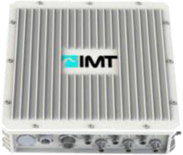 CRx6 Receiver
CRx6 Receiver
 CIRAS-X6 Receiver
CIRAS-X6 Receiver
Sports and Entertainment: The MicroLite 2 is a professional-grade wireless transmitter that is available in both licensed and unlicensed frequency bands, the latter enabling non-TV broadcasters to capture broadcast quality video without the cost and limitations of gaining a frequency license. The unlicensed market is very large and just being opened to high quality technologies.
 MicroLite 2
MicroLite 2
Government/Surveillance: IMT has focused on miniature transmitters and handheld receivers and benefits from limited competition in this area. The IMT DragonFly is designed to capture real-time, high-quality video from UAV/UGV/Body Cams/Concealments for display on fixed or mobile receive applications. The MiniMobile Commander and Mobile Commander are handheld receiver/monitors designed for tactical situations. IMT vNet IP Video Distribution Servers enable commanders and managers to view near real time video captured on scene and consumed anywhere in the world over public and private IP networks.
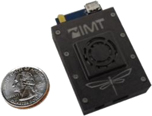 IMT DragonFly
IMT DragonFly
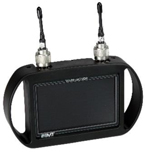 MiniMobile Commander Receiver Monitor
MiniMobile Commander Receiver Monitor
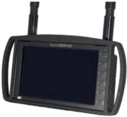 Mobile Commander Receiver Monitor
Mobile Commander Receiver Monitor
Vislink Products
Vislink designs and manufactures products encompassing microwave radio components, satellite communication, cellular and wireless camera systems, and associated amplifier items. Vislink solutions include the following product categories:

Vislink’s key product offerings include:
- HCAM, a 4K Ultra HD-capable on-camera wireless video transmitter;
- HDX-1100, a high-powered aircraft downlink transmitter;
- Newsnet, a revolutionary approach to ENG operations that brings studio workflows directly to the field;
- ViewBack, a lightweight, low power, low latency, dual channel diversity receiver-decoder that enables quicker production, more efficient editing, and more effective collaboration between camera operators and studio teams; and
- SatWare, a high-performance embedded computing and routing system designed to provide enhanced capability and simplified use of broadcast equipment in the field.

HCAM
 HDX-1100
HDX-1100
xMax
xMax is the flagship implementation of xG’s innovative cognitive radio intellectual property. Operating initially within the 902 – 928 MHz license-free band, xMax is a mobile voice over internet protocol (“VoIP”) and broadband data system that utilizes an end-to-end internet protocol (“IP”) system architecture. xMax technology is spectrum agnostic. In any spectrum band that xMax operates in, the company break the band into channels and sub channels. The company then use spatial processing and adaptive modulation to mitigate interference in that band. If the band becomes unusable because of overwhelming interference, the company then use dynamic spectrum access to change to another channel or band.
A key feature of the xMax system is the ability to leverage off-the-shelf commercial mobile devices (such as smartphones, laptops and tablets), resulting in reduced network infrastructure, maintenance and operational costs. The xMax system allows operation in the free, unlicensed 902 – 928 MHz ISM band spectrum (available in most of the Americas) instead of having to purchase scarce licensed spectrum which can be prohibitively expensive.
The equipment that the company develop, manufacture and market under the xMax brand includes a suite of products and services that encompass an integrated, turnkey network solution, as set forth below. These products embody its broad portfolio of innovative intellectual property including spectrum sharing, interference mitigation, multiple-input multiple-output (MIMO) and cognitive and software defined radio (SDR). xMax utilizes an end-to-end IP architecture that allows it to serve as a turnkey network system ranging from a last-mile solution to a full network backbone.
xMax products include the following components:
- xMax NOW Transportable Broadband Wireless System;
- CN5100 Mobile Hotspots;
- CN3100 Vehicle Modems designed to be installed inside or outside vehicles;
- CN3200 Dual-Band Routing Modem;
- CN1100 Wireless Access Point; and
- CN7000 Mobile Control Center
Below is a diagram that provides a high-level overview of the xMax network architecture:
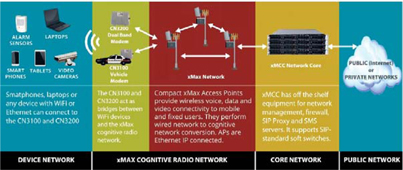
Competition and Competitive Positioning
The primary competitors of IMT and Vislink are Domo Tactical Communications (formerly a division of Cobham), Silvus Technologies, Persistent Systems, Troll Systems and a number of smaller market- specific businesses.
The union of IMT and Vislink created the market share leader in the professional broadcast and media video transmission sector. The company believe that their products solve a growing market need for stable, high-definition, wireless video communications. Separately, IMT and Vislink have been able to successfully leverage their long history of broadcast industry leadership, reputations for advanced technology, and ability to provide end-to-end-solutions in order to maintain and increase their customer bases and to continue providing highly competitive offerings. Both companies have mature product offerings that address applications in growing market segments, including in-game sports video mobile feeds, real-time capture and display of footage from drones and other aerial platforms, and rapid-response electronic news gathering operations.
As the businesses continue to be integrated, it is expected that these advantages will be further strengthened. Because there is currently minimal overlap in product offerings between IMT and Vislink, the company believe the company will now have the opportunity to offer an expanded range of product offerings, additional services and enhanced capabilities. The company believe this expansion of product offerings will position it for continued growth in the broadcast and sports and entertainment markets, and the company expect near term growth in the government/surveillance market. As the company realize full control of the production processes of IMT and Vislink, the company expect to be able to realize improving margins, control over product quality and competitive agility.
With respect to xMax, the wireless technology sector is intensely competitive and is rapidly evolving. Several vendors have researched and experimented with cognitive radios. This research predominately falls under the traditional industry defined use of a cognitive radio where cognitive capabilities are restricted to dynamic spectrum access (“DSA”) within the radio device. However, the company believe that only a few vendors are undertaking development across all the key elements of cognitive technology: spectrum sensing, spectrum management, spectrum mobility, spectrum sharing, and spatial processing.
The company not only face competition from other companies developing cognitive radio solutions, but XG Technology is also competing for sales to end-user customers with companies offering solutions utilizing other technologies for access to licensed and unlicensed spectrum, such as LTE and Wi-Fi. In the cognitive radio market, its competitors include, Neul Ltd., Shared Spectrum Corporation and Adaptrum.
The main vendor in the public safety market is Motorola Solutions, which is a global player that holds a dominant market share in the U.S. of over 80% in public safety and government wireless networks. Meanwhile, in the defense market, there are several large and significant companies that provide wireless communications systems to U.S. and international military agencies, including Harris Corporation, ITT Industries, Raytheon, Boeing, Thales Communications and Lockheed Martin. It is common for one competitor to be a subcontractor to another competitor who is the prime contractor and vice versa as programs of record ramp up and ramp down over time.
A number of its current or potential competitors have long operating histories, significant brand recognition, large customer bases and significantly greater financial, technical, sales, marketing and other resources than the company do. The company believe that xMax possesses the following key features that together constitute a competitive advantage to alternatives in the market:
Mobility and Rapid Deployability — XG Technology has developed its product line to support mobility and rapid deployability. xMax has been designed with the ability to automatically perform its own RF planning by utilizing an extended range of non-interfering channels without manual intervention. This allows for the rapid deployment of communications assets which is often essential in the establishment of critical communications infrastructures. It also provides the ability to make the entire network infrastructure mobile, with CN1100 Access Point base stations able to move in relation to each other as well as to CN5100 Mobile Hotspots, CN3200 Dual-Band Routing Modems, xMax CN3100 Vehicle Modems and users. The company believe this feature will be unique to xMax and will address a major capability gap for defense, homeland security, and public safety agencies which all require “on the move” communications networks. These agencies currently have no equipment or capacity for this identified and urgently needed capability.
IP Product Architecture — The all-IP architecture on which xMax is based allows end-users to access the network with any IP-enabled device such as smartphones, tablets, and laptops while using their preferred software including VPNs and other security applications. The company believe this can reduce costs by eliminating the need for expensive proprietary end-user devices and applications, while freeing users from the constraints of public cellular networks.
Exceptional Flexibility — xMax can serve as either a fixed, mobile, portable, or aerial wireless infrastructure, making it ideal for a number of deployment scenarios, including emergency response, public safety and defense, where communications must often be established quickly in remote areas, as well as for utilities and other critical infrastructure operations.
High Level of Interoperability — Although xMax operates as a self-contained communications infrastructure, it is interoperable with both public and private systems including P25, PSTN, cellular networks, and the forthcoming FirstNet nationwide public safety communications network.
Interference Mitigation — Whereas most competitors’ efforts to date focus on interference avoidance, XG Technology has extended its core competency into the realm of interference mitigation. In a world where wireless demand is certain to result in more congested airwaves, the company believe the fact that its intellectual property can help to ameliorate interference is a competitive advantage in the marketplace.
The company believe the company compete favorably with respect to the areas set forth above. However, its industry is evolving rapidly and is becoming increasingly competitive. Other developers could develop alternative wireless cognitive networks and other technologies that may adversely affect its ability to attract and retain customers. These competitors may include companies of which the company may not be currently aware.
With respect to its xG Federal Sector Group, the company believe that the growing need for wireless spectrum among public and private users will continue to drive interest in technology-based spectrum sharing approaches, such as cognitive radio and opportunistic (i.e. shared) spectrum use. In fact, a number of federal agencies, including the Department of Defense, the National Science Foundation, and the Department of Energy, have ongoing research and development activities in the area of spectrum sharing. For example, the Defense Advanced Research Projects Agency (DARPA) supported early research into cognitive radio and dynamic spectrum access and it continues to address key problem areas in spectrum sharing for military systems. Leveraging elements of its intellectual property portfolio and technological foundation in areas including interference mitigation, cognitive radios and interference mitigation and multiple in, multiple out (“MIMO”) antenna technology, the company believe XG Technology is well-placed to identify, respond to, and secure funded spectrum sharing research opportunities.
Sales and Marketing
The company's sales team currently is comprised of sales managers responsible for defined regional areas, inside sales personnel, and business development representatives focused on targeted sectors and/or regions. They are supported by solution engineers trained in technical sales with a given market focus. This sales team is focused on supporting its current customers, as well as nurturing relationships with prospective customers in key domestic and international markets. For its IMT, Vislink and xMax brands, the company employ a combination of sales channels, including direct-to-end customer sales, network group sales, reseller/integrators and Original Equipment Manufacturer (“OEM”) sales channels in order to use the most efficient means of reaching customers depending on the market segment. Sales efforts are supported by marketing and public relations activities, digital and print marketing initiatives, the creation of support materials, and trade show and other event appearances.
The company's IMT and Vislink entities have developed significant followings based on the reputation of their product offerings for performance, reliability and use of advanced technology. Both have developed diverse and stable customer bases for repeat product purchases from blue chip, tier-1 clients in the broadcasting and sports and entertainment markets, as well as among high-profile agencies and organizations in the surveillance (military and government) markets.
As of December 31, 2017, its business development, sales and marketing team consisted of 43 full-time employees or contractors.
Customers
The company's IMT and Vislink entities have developed significant followings based on the reputation of their product offerings for performance, reliability and use of advanced technology. Both have developed diverse and stable customer bases for repeat product purchases from blue chip, tier-1 clients in the broadcasting and sports and entertainment markets, as well as among high-profile agencies and organizations in the surveillance (military and government) markets.
Manufacturing and Suppliers
XG Technology has historically retained contract manufacturers to manufacture, test, assure the quality of, and ship its products. With the acquisitions of IMT and Vislink, XG Technology has additional options for both internal and external manufacturing of products. This provides it the opportunity to develop optimal supply chains that are tailored to its needs on a per-product and per-solution basis. Going forward, the company anticipate that the company will focus on its core strengths, which are innovation and technology design and the development and creation and exploitation of its intellectual property. Accordingly, the company ultimately plan to become a designer, developer and fabless supplier of xMax integrated circuits and system software solutions for xMax products where the company would supply integrated circuits produced either through the IMT and Vislink assets, if XG Technology is able to successfully integrate them into its business, or by third party manufacturing partners under license, software, reference designs, features, tools and technical support.
While XG Technology has begun to integrate IMT and Vislink into its plan to build its products, the company may continue to rely, particularly in the short term, on third party components and technology to build its products, as the company procure components, subassemblies and products necessary for the manufacture of its products based upon its design, development and production needs. While components and supplies are generally available from a variety of sources, the company currently depend on a single or limited number of suppliers for several components for its products. XG Technology is using a single source digital signal processor that may be difficult to replace with an equivalent performance device. The company rely on purchase orders rather than long-term contracts with its suppliers. The company do not currently stockpile enough components to mitigate any potential supply disruption if XG Technology is required to re-engineer its products to use alternative components.
Intellectual Property
The company's business is significantly based on the creation, acquisition, use and protection of intellectual property. Some of this intellectual property is in the form of software code, patented technology and trade secrets that the company use to develop its technologies, solutions and products. XG Technology has developed a broad portfolio of intellectual property that covers wired and wireless communications systems. As of December 31, 2017, in the U.S., XG Technology has 57 patents granted, 1 patent application pending, and no provisional application pending. Internationally, XG Technology has 33 patents granted, 4 patent applications pending, and no Patent Cooperation Treaty (PCT) applications.
Areas of its development activities that have culminated in filings and/or awarded patents include:
- Spatial Processing (MIMO);
- Self-Organizing Networks;
- RF Modulation;
- Compression (protocols, payload, signaling, etc.);
- Modulators/Demodulators;
- Antennas/Shielding;
- Wired and Wireless Networks;
- Media Access Control Protocols;
- Interference Mitigation;
- Cognition enabling over the air protocols (MAC layer);
- Wireless data compression;
- Dynamic Spectrum Access (DSA);
- Quality of Service; and Quality of Service; and
- Digital Broadcasting over Microwave Links.
The company protect its intellectual property rights by relying on federal, state and common law rights, as well as contractual restrictions. The company control access to its proprietary technology by entering into confidentiality and invention assignment agreements with its employees and contractors, and confidentiality agreements with third parties. The company also actively engage in monitoring activities with respect to infringing uses of its intellectual property by third parties.
In addition to these contractual arrangements, the company also rely on a combination of trade secret, copyright, trademark, trade dress, domain name and patents to protect its products and other intellectual property. The company typically own the copyright to its software code, as well as the brand or title name trademark under which its products are marketed. The company pursue the registration of its domain names, trademarks, and service marks in the United States and in locations outside the United States. The company's registered trademarks in the United States include “xG”, and “xMax”, “IMT”, “Vislink”, the names of its products, among others.
Circumstances outside its control could pose a threat to its intellectual property rights. For example, effective intellectual property protection may not be available in the United States or other countries in which its products are sold or distributed. Also, the efforts XG Technology has taken to protect its proprietary rights may not be sufficient or effective. Any significant impairment of its intellectual property rights could harm its business or its ability to compete. In addition, protecting its intellectual property rights is costly and time-consuming. Any unauthorized disclosure or use of its intellectual property could make it more expensive to do business, thereby harming its operating results.
Companies in the mobile wireless communications technology and other industries may own large numbers of patents, copyrights and trademarks and may frequently request license agreements, threaten litigation or file suit against it based on allegations of infringement or other violations of intellectual property rights. The company may face allegations by third parties, including its competitors and non-practicing entities, that XG Technology has infringed their trademarks, copyrights, patents and other intellectual property rights. As its business grows, the company will likely face more claims of infringement.
Employees
As of December 31, 2017, the company employed 222 full-time equivalent employees, contractors or consultants, which included 85 in development, 5 officers, 22 in general and administrative, 8 in business development, 67 in operations and 35 in sales and marketing. The company also engage a number of temporary employees and consultants. None of its employees are represented by a labor union or are party to collective bargaining agreements. The company believe that XG Technology has good relations with its employees.




